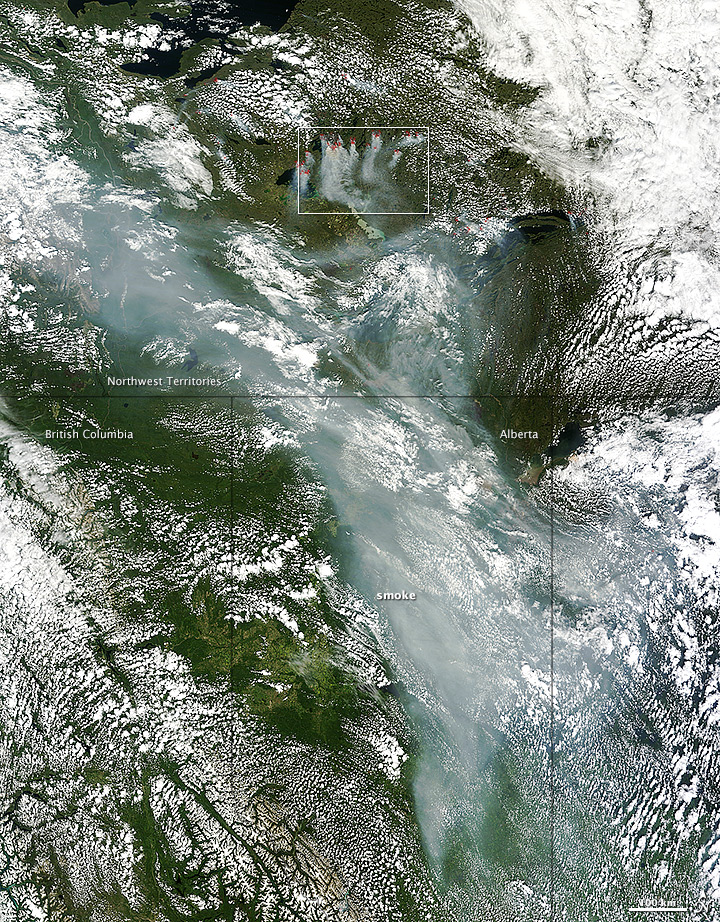


A combination of lightning and dry forests fueled numerous wildfires in Canada’s Northwest Territories in July 2014. The fires, burning in Canada’s boreal zone, are producing dense smoke. As of July 8, at least 164 blazes had charred more than 425,172 hectares (1,642 square miles), according to the Canadian government. The fires destroyed one home, forced hundreds of people to evacuate, and sent smoke drifting as far south as the continental United States.
The Moderate Resolution Imaging Spectroradiometer (MODIS) on NASA’s Terra satellite captured this image of smoke billowing from wildfires near Faber Lake on July 7, 2014. The location of active fires is shown in red. A broader view (below) shows a large smoke plume streaming south into Alberta and Saskatchewan. While the fires highlighted in the top image likely contributed some smoke to the plume, other blazes contributed as well. By July 9, smoke had drifted as far south as North and South Dakota in the United States. The Geostationary Operational Environmental Satellite 15 (GOES-15) captured this image of the smoke plume. You can also watch this animation of the smoke’s movement.
In a study published in July 2014, a team of scientists led by a researcher from the Desert Research Institute announced they had a discovered a new type of soot particle produced by wildfires. The particles, called “superaggregates,” are on average ten times longer and have a more compact shape than conventional soot particles from vehicles and cook stoves. Their distinctive shape means they likely have a more potent warming effect on the climate than other types of soot.
“We found that superaggregates contribute up to 90-percent more warming than spherical sub-micrometer soot particles, which current climate models use,” said the study’s lead author, Rajan Chakrabarty. “These preliminary findings warrant further research to quantify the significant impact these particles may have on climate, human health, and air pollution around the world.”
NASA image courtesy Jeff Schmaltz, LANCE/EOSDIS MODIS Rapid Response Team at NASA GSFC. Caption by Adam Voiland.